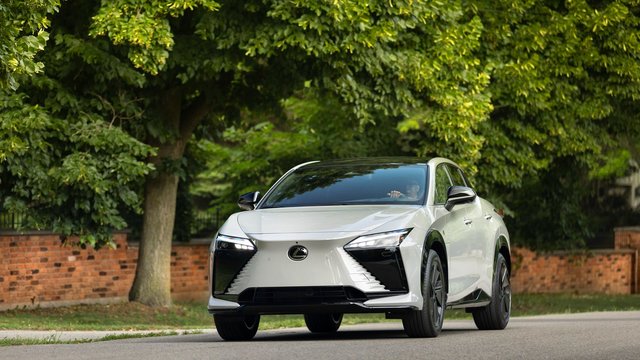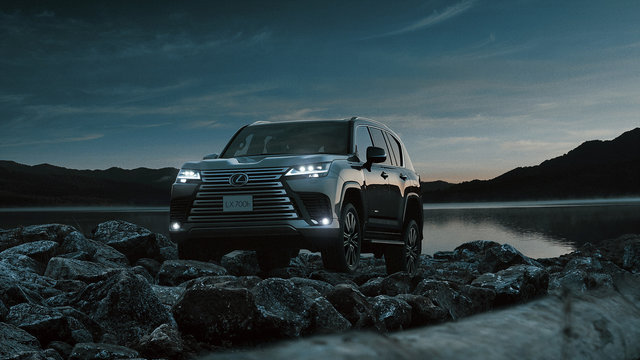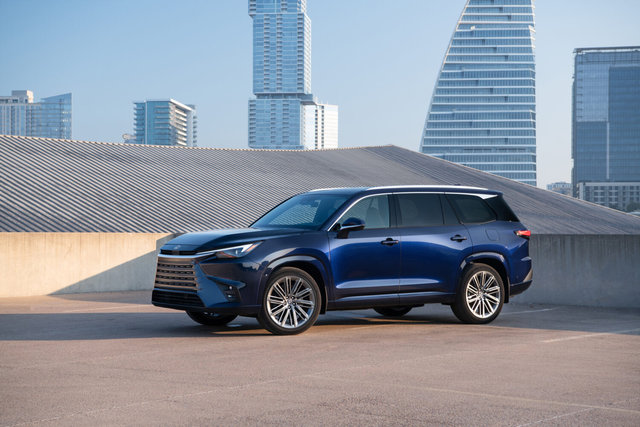The 2026 Lexus LX 700h Luxury represents a rare achievement: a full-size luxury SUV that delivers...

Electric vehicle ownership in Canada continues to evolve as charging infrastructure expands and technology improves. For Lexus EV drivers in Ontario, recent developments in charging access and convenience are making battery-electric and plug-in hybrid vehicles more practical for everyday use. Understanding these improvements helps prospective EV buyers evaluate whether electric driving fits their lifestyle.
The 2026 Lexus RZ adopts the North American Charging System (NACS) charging port, which opens access to thousands of high-speed charging stations across Canada. This shift to NACS represents a significant expansion of available charging options compared to previous connector standards. For drivers in Mississauga and throughout Ontario, this means more flexibility when planning longer trips or finding convenient charging locations.
How NACS Improves Charging Access
The North American Charging System uses a different connector design than the Combined Charging System (CCS) that was standard on earlier electric vehicles. The key advantage: NACS provides access to one of the largest fast-charging networks in North America, dramatically increasing the number of compatible charging stations available to Lexus EV drivers.
The 2026 RZ includes this NACS port as standard equipment. When you need to charge during longer trips, you'll find more options along major highways and in urban areas. This expanded network reduces range anxiety by ensuring charging stations are available when needed.
Fast Charging Capabilities
The 2026 Lexus RZ supports DC fast charging through its NACS port. Under ideal conditions, the RZ can charge from 10% to 80% battery capacity in approximately 30 minutes when using compatible DC fast charging stations. This charging speed makes it practical to add range during meal breaks or rest stops on longer journeys.
For home charging, the RZ includes enhanced Level One and Level Two AC charging capabilities. The upgraded 11 kW on-board AC charger (increased from 7 kW on previous models) speeds up home charging times compared to earlier electric Lexus models.
Understanding Charging Levels
Different charging methods serve different needs for EV drivers:
Level One Charging (120V household outlet): Slowest option, typically adding 6-8 km of range per hour. Suitable for overnight charging if you drive short distances daily.
Level Two Charging (240V dedicated circuit): Faster home charging, adding approximately 40-50 km of range per hour depending on the on-board charger capacity. Most EV owners install Level Two chargers at home for convenient overnight charging.
DC Fast Charging (public stations): Fastest option, adding significant range in 20-30 minutes. Best for long-distance travel or when you need quick charging away from home.
The 2026 RZ's 11 kW on-board charger maximizes Level Two charging speed, reducing the time needed to fully charge the battery at home overnight.
Charging Infrastructure in Ontario
Ontario has seen substantial growth in public charging infrastructure. Major highways feature DC fast charging stations at regular intervals, while urban areas offer Level Two charging at shopping centres, parking facilities, and workplaces.
Quebec's Electric Circuit operates the largest public charging network in the province, with stations throughout Quebec and expanding coverage in Ontario. Multiple other networks, such as Electrify Canada and ChargePoint, offer additional charging options across the province.
For Mississauga residents specifically, charging stations are available at:
- Municipal parking lots and facilities
- Shopping centres and retail locations
- Highway service centres along the 401 and other major routes
- Some workplace locations
Planning for EV Ownership
Successful EV ownership typically involves some planning around charging habits. Most EV drivers charge primarily at home overnight, treating their vehicle like a smartphone that plugs in when not in use. Public charging becomes necessary mainly for longer trips beyond the vehicle's range.
The 2026 RZ offers three range options depending on model:
- RZ 350e: approximately 486 km estimated range
- RZ 450e AWD: approximately 420 km estimated range
- RZ 550e F SPORT AWD: approximately 366 km estimated range
These ranges cover typical daily driving needs for most Ontario residents. A full charge provides enough range for several days of commuting before requiring another charging session.
Home Charging Considerations
Installing a Level Two charger at home provides the most convenient EV ownership experience. This requires:
- A dedicated 240V circuit (similar to what electric dryers or ovens use)
- Professional installation by a licensed electrician
- A wall-mounted charging unit compatible with your vehicle
Many Ontario homeowners qualify for incentives that offset Level Two charger installation costs. Check current provincial and federal programs for available rebates.
For apartment or condo residents, charging access varies by building. Some newer developments include EV charging infrastructure, while older buildings may require approval from property management to install charging equipment.
Cost Comparison: Electricity vs. Gasoline
Charging an EV with home electricity typically costs significantly less per kilometre than refuelling a gasoline vehicle. Ontario electricity rates vary by time of use, with lower rates overnight when most EV charging occurs.
Public DC fast charging stations charge higher rates than home electricity, but still generally cost less per kilometre than gasoline. The exact cost depends on:
- The charging network's pricing structure
- Your battery's charge level when you start
- How much energy you actually consume
- Whether the station charges by time or by kilowatt-hour
Winter Performance and Charging
Ontario winters affect EV range and charging performance. Cold temperatures reduce battery efficiency, meaning you'll see lower range estimates in January compared to July. The 2026 RZ includes battery thermal management systems to minimize these effects, but some range reduction in cold weather is normal for all electric vehicles.
The heated steering wheel, heated seats, and heated LEXUS emblem on the RZ provide comfort without dramatically affecting range, as these use less energy than running the main cabin heater continuously.
Is Electric Right for Your Driving Needs?
Consider whether an electric Lexus fits your situation:
Good fit if you:
- Drive primarily within the Greater Toronto Area
- Can charge at home overnight
- Take occasional longer trips where DC fast charging is available
- Want lower fuel costs for daily driving
- Prefer quiet, smooth acceleration
May require more planning if you:
- Frequently drive more than 400 km per day
- Cannot install home charging
- Regularly travel to remote areas with limited charging infrastructure
- Need maximum towing capacity (EVs generally tow less than comparable gasoline models)
Beyond the RZ: Plug-In Hybrid Options
For drivers not ready for full battery-electric vehicles, Lexus offers plug-in hybrid models that combine electric driving capability with gasoline range:
The NX 450h+ provides electric-only driving for shorter trips (typically 40-60 km depending on conditions) while maintaining unlimited range using the gasoline engine. You can charge the battery at home or public stations, but if you forget or can't find a charger, the vehicle functions normally as a hybrid.
The RX 450h+ offers similar plug-in hybrid capability in a larger luxury SUV package. These models provide a transition path to electric driving without the range limitations of pure EVs.
Learn More at Erin Park Lexus
Our team at Erin Park Lexus in Mississauga can answer your questions about electric vehicle ownership, charging infrastructure in Ontario, and whether the 2026 RZ or Lexus plug-in hybrids align with your driving patterns. We can demonstrate the RZ's charging capabilities and explain how NACS access expands your charging options across Canada. Stop by to explore how electric driving fits into your lifestyle.
Other Articles That May Interest You
The 2026 Lexus RX returns with an expanded lineup that gives Ontario luxury SUV shoppers more...
Finding the right three-row SUV for your family requires more than just counting seats. The 2026...





